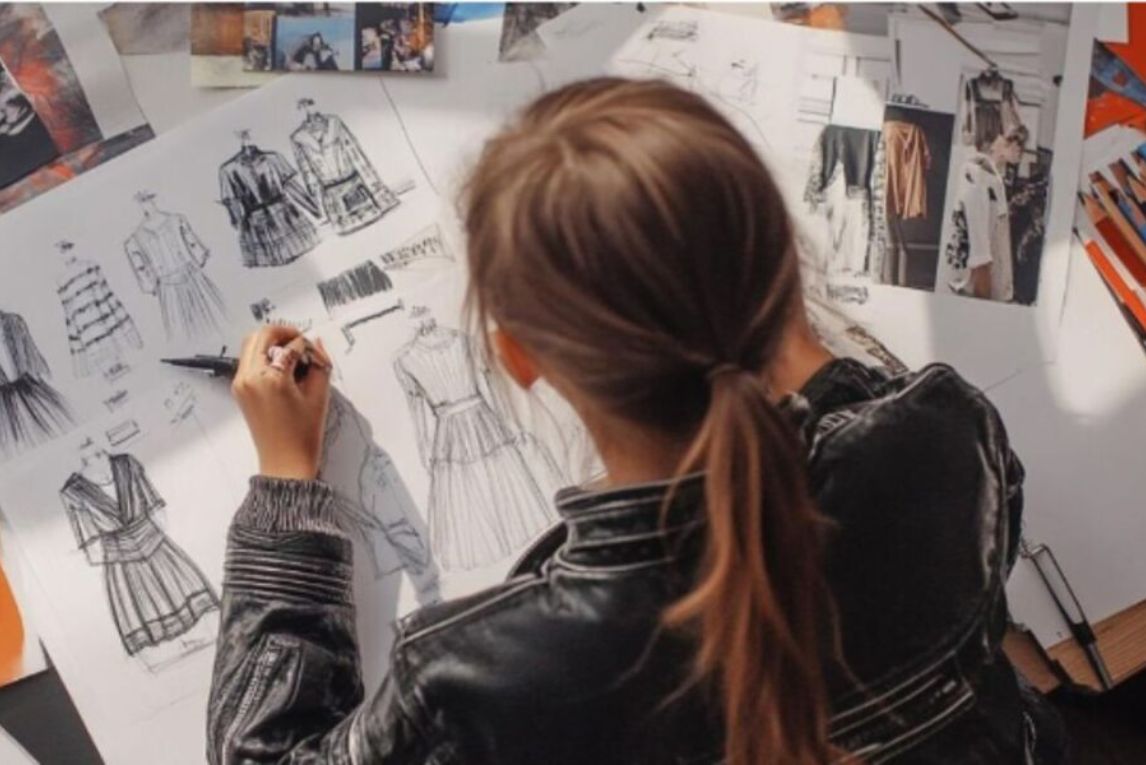Storyboarding is a critical part of any visual storytelling process, whether it’s for films, animations, advertisements, or even video games. A storyboard provides a visual roadmap, ensuring that the creators and the production team are aligned with the creative vision of the project. One of the most well-respected professionals in this field is Ashley Ann Tahilan, whose storyboard guide has become a popular resource among both beginners and experienced creators.
In this blog, we will dive into Ashley Ann Tahilan’s Storyboard Guide, exploring her detailed approach, methods, and how her framework can be applied to any visual storytelling project.
What is a Storyboard and Why is it Important?
A storyboard is a sequence of drawings or images that map out the scenes or shots of a film, animation, or any visual narrative. It serves as a visual representation of how the story will unfold, scene by scene. Each frame includes details such as camera angles, movements, character actions, and even dialogue.
Benefits of Using Storyboards:
- Visual Clarity: It helps the team visualize the storyline before production begins.
- Collaboration Tool: Provides a common framework for directors, animators, and the creative team.
- Problem-solving: Allows creators to identify potential issues early in the production process.
- Time and Cost Efficiency: Avoids unnecessary rework by laying everything out beforehand.
Who is Ashley Ann Tahilan?
Ashley Ann Tahilan is a distinguished storyboard artist known for her unique style of breaking down complex visual narratives into simple, digestible formats. She has worked on several high-profile animation and film projects and is well-regarded for her ability to create clear, concise, and dynamic storyboards.
Key Highlights of Her Work:
- Expertise in capturing complex emotions and action sequences.
- Strong focus on visual clarity, ensuring that the storyboard is easy to follow.
- Dynamic use of camera angles and movement to create more engaging narratives.
Key Elements of Ashley Ann Tahilan’s Storyboard Guide
1. Understanding the Story Structure
Before you even begin sketching, Tahilan’s guide emphasizes the importance of understanding the full narrative arc of your project. Every great storyboard starts with a well-structured story. According to her, the basic structure involves:
- Beginning (Setup): Introduce the characters and setting.
- Middle (Conflict): Present the challenges or the main conflict.
- End (Resolution): Resolve the conflict and conclude the story.
Understanding this structure ensures that your storyboard flows smoothly from start to finish.
2. Thumbnailing: Rough Drafting the Visual Flow
One of the key techniques in Ashley Ann Tahilan’s Storyboard Guide is thumbnailing—a method of sketching rough versions of your storyboard scenes. These small, quick sketches help you lay out the sequence of scenes without committing too much time to detail early on.
Benefits of Thumbnailing:
- Quick Iteration: Helps you explore different visual approaches quickly.
- Pacing: Ensures that the narrative pacing feels right.
- Efficiency: Saves time and prevents unnecessary revisions later in the process.
| Thumbnailing | Detailed Storyboarding |
|---|---|
| Fast, rough sketches to test visual ideas | Refined, polished images ready for production |
| Focus on overall composition and flow | Focus on character expression, details, and depth |
| Ideal for brainstorming and testing | Ideal for finalizing shots and production |
3. Effective Use of Camera Angles and Movements
Camera angles and movements can drastically affect the emotional tone and visual interest of your project. Ashley Ann Tahilan emphasizes how important it is to experiment with different angles to enhance the storytelling.
Types of Camera Shots to Consider:
- Close-ups: Focus on characters’ emotions or critical details.
- Wide shots: Establish the environment or show a large-scale action.
- Over-the-shoulder shots: Create a more intimate, personal perspective.
- Panning and Zooming: Add motion to static scenes, making the storyboard more dynamic.
Using these techniques can transform a simple storyboard into a visually compelling narrative that guides both the production team and the audience.
4. Character Expression and Body Language
In any visual story, character expressions and body language play a huge role in conveying emotions and actions. Tahilan’s guide highlights the importance of capturing these aspects clearly, even in rough sketches, to ensure that the emotional tone of each scene is understood.
How to Capture Character Emotion:
- Facial Expressions: Focus on drawing the eyes, eyebrows, and mouth to express emotions.
- Body Language: Use body posture and gestures to emphasize mood and action.
- Consistency: Make sure the characters’ emotions and movements remain consistent across frames.
The clarity in character design ensures that your storyboard communicates the emotional core of each scene effectively.
Also Read : Simple Ways to Create a Luxurious Bathroom Retreat
Step-by-Step Process from Ashley Ann Tahilan’s Storyboard Guide
Step 1: Break Down the Script
Start by breaking down your script into individual scenes or shots. This will give you a clear understanding of how many scenes you need to storyboard and what the key elements of each scene are.
Step 2: Create Rough Thumbnails
Using quick and simple sketches, outline the main actions, camera angles, and transitions in each scene. Focus on the flow of the story and experiment with different visual styles.
Step 3: Refine the Key Shots
Once the thumbnails are ready, select the most important shots that require more detail. Refine these shots by focusing on character expressions, camera angles, and background elements.
Step 4: Add Notes for Each Scene
Next to each frame, add brief notes about camera movements, sound effects, or specific actions that are crucial to the scene.
Step 5: Review and Revise
Before finalizing your storyboard, review it with your creative team. Make revisions as necessary to ensure that the storyboard aligns with the overall vision of the project.
Tools Recommended in Ashley Ann Tahilan’s Storyboard Guide
To streamline the storyboarding process, Tahilan suggests using several tools, both traditional and digital.
| Tool | Purpose |
|---|---|
| Storyboard Pro | Industry-standard software for creating detailed storyboards |
| Photoshop | For digital sketching and scene design |
| Paper and Pencil | For quick, hand-drawn thumbnails and rough drafts |
In addition, storyboard templates can help you maintain consistency and format, especially when working on larger projects.
Conclusion
Ashley Ann Tahilan’s storyboard guide is an invaluable resource for anyone looking to improve their storyboarding skills. From understanding the structure of a story to refining camera angles and character expressions, her approach provides a clear and efficient framework for crafting engaging visual stories. Whether you’re a beginner or an experienced storyboard artist, following Tahilan’s guide will help you create compelling and well-structured storyboards that bring your ideas to life.
By integrating Ashley Ann Tahilan’s storyboard guide into your creative process, you can streamline production, save time, and ensure that your project remains visually cohesive from start to finish.
Summary Table: Key Concepts from Ashley Ann Tahilan’s Storyboard Guide
| Concept | Description |
|---|---|
| Thumbnailing | Quick sketches to map out the visual flow of scenes |
| Camera Angles | Use dynamic angles to enhance storytelling |
| Character Expressions | Capture emotions and actions through body language |
| Storyboard Tools | Use software like Storyboard Pro for efficient design |
This detailed and descriptive guide on Ashley Ann Tahilan’s storyboard guide ensures that you have the practical tips and knowledge to create a storyboard that enhances your storytelling process.
FAQs about Ashley Ann Tahilan Storyboard Guide
1. What is the Ashley Ann Tahilan storyboard guide?
The Ashley Ann Tahilan storyboard guide is a comprehensive framework developed by the renowned storyboard artist Ashley Ann Tahilan. It provides techniques and best practices for creating visually compelling and well-structured storyboards that help storytellers plan and organize their projects effectively.
2. How can I apply Ashley Ann Tahilan’s storyboard guide to my project?
You can apply the Ashley Ann Tahilan storyboard guide by starting with the basics of story structure, creating rough thumbnails to map out the visual flow, refining key scenes with detailed camera angles and character expressions, and reviewing the final storyboard for clarity.
3. What tools does Ashley Ann Tahilan recommend in her storyboard guide?
The Ashley Ann Tahilan storyboard guide suggests using tools like Storyboard Pro and Photoshop for digital sketching and detailed storyboard creation. For traditional storyboarding, she also recommends starting with simple pencil-and-paper thumbnails before moving to more refined visuals.
4. Why is thumbnailing important in the Ashley Ann Tahilan storyboard guide?
Thumbnailing is a key step in the Ashley Ann Tahilan storyboard guide because it allows for quick and rough sketching of scene sequences. This helps in visualizing the flow, experimenting with camera angles, and ensuring the pacing is right before committing to detailed work.
5. How does the Ashley Ann Tahilan storyboard guide enhance storytelling?
The Ashley Ann Tahilan storyboard guide enhances storytelling by focusing on visual clarity, dynamic camera movements, and character expressions. By following her step-by-step process, creators can ensure their visual narratives are engaging, cohesive, and aligned with the story’s emotional core.










